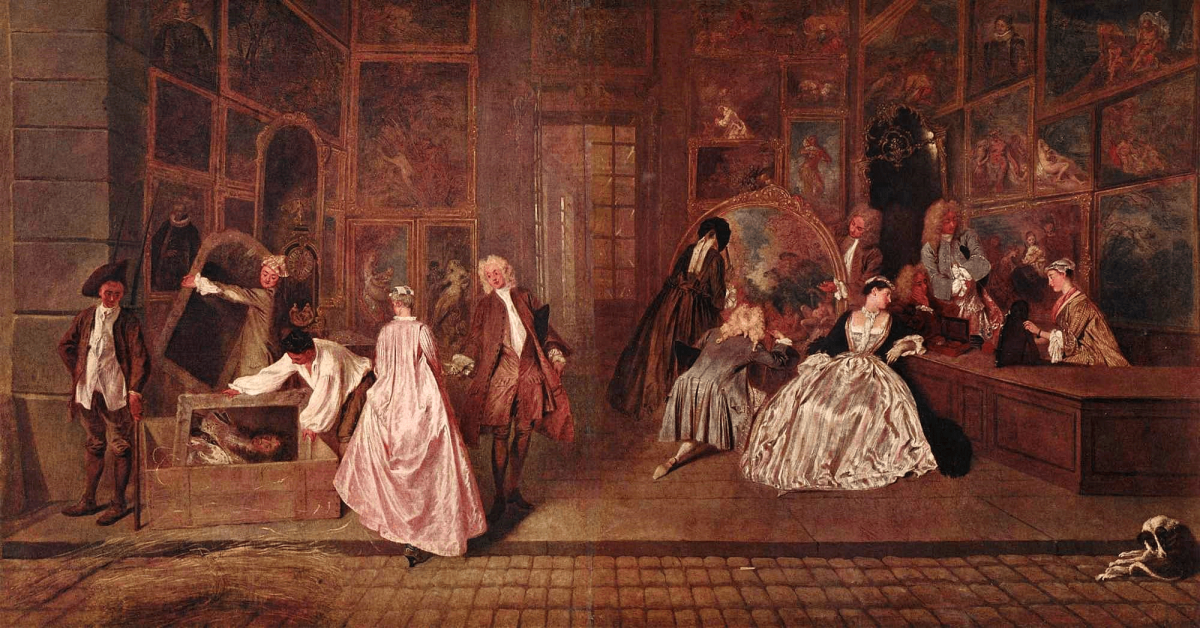Edme-Francois Gersaint was one of the first art dealers. Gersaint’s Shopsign (L’Enseigne de Gersaint) by Jean-Antoine Watteau, c. 1720-1. Berlin, Schloss Charlottenburg.
Rogue’s Gallery: The Rise (and Occasional Fall) of Art Dealers, the Hidden Players in the History of Art by Philip Hook (New York: The Experiment, 2017) is about the history of art dealers, basically from the eighteenth century to the present day. I don’t know if that topic sounds interesting on the face of it, but please trust me that it’s fascinating. The personalities of art history’s most significant art dealers have been at least as colorful as the artwork they’ve sold. And, as I came to learn through this book, they’ve played a much bigger role in art history than I could have imagined. From the nineteenth century on, art dealers were surprisingly responsible for the successes of modern art movements like Impressionism, Post-Impressionism, Cubism, and Abstract Expressionism. Even the Pre-Raphaelites apparently benefitted from being championed by an ambitious dealer.
The dealers mentioned in this book include Duveen, Wildenstein, Durand-Ruel, Vollard, Kahnweiler, Rosenberg, and Castelli. Some or all of these names may be familiar to art lovers. I’ve seen these names so often on old auction catalogues, so it was cool to learn more about the studies behind them. One chapter also talks about the development of Sotheby’s auction house into the giant it is today, and this was also quite interesting.
I suspect it won’t come as a surprise to many of you that art dealing often isn’t a squeaky clean enterprise. (And let’s not even get started on the collectors who purchased from them.) In reality, high-level business rarely is. That’s a big part of what makes this book such compelling reading, but it’s also disconcerting at times. It’s strange to consider the question, which Hook raises several times, of how much dealers were responsible for manipulating artists’ developments and the course of art history itself. No one wants to think that money-loving dealers like Paul Durand-Ruel were ultimately behind beloved works of Impressionism, for example. However, Hook decides that it’s an unanswerable question, so I guess we’ll just be left to wonder if we want to.
Anyway, I loved this book, and I recommend it highly! Five stars, all the way. I will definitely search out more books by Philip Hook. He’s the senior director of Impressionist & Modern Art at Sotheby’s, so I’m sure he has plenty more crazy stories about the art market.


